Web3's Three Revolutions
Compilation: Shi Taosheng
Source: IPFS Force Zone
Original link: https://medium.com/@tonyob/the-3-revolutions-of-web-3-7165ed6b3036

- Inspiration from the bZx event: essentially more like a arbitrage manipulation using the DeFi protocol and products
- ETHDenver, the largest Ethereum hacker in the U.S .: What are the continuous new projects for DeFi?
- Babbitt Column | Scientific Research Expenditure Model and Coin Development Fund Optimization Plan
This article is based on a text version of Google's product designer Tony Aubé's presentation at WAQ2019. The article explains the three evolutionary logics of Web3, summarizes the three fundamental characteristics of Web3, and particularly emphasizes that most of Web3's changes will occur at the infrastructure level. For most people, this will be a slow and almost invisible Change. In addition, from the perspective of the pendulum cycle of history, the author points out that Web 3 is not to replace the Internet, but to push the Internet back to a more balanced and democratic Web.
Last year, the Internet celebrated its 30th birthday.
The inventor of the Internet, Tim Berners-Lee, took the opportunity to express his dissatisfaction with the direction the Internet has taken in recent years.
The internet is 30 years old, but this is not the network we want. -Berners Lee
In order to understand his point and why this is important, it is necessary to review the history of the Web.
1 Web History

Before the Web, it was the Internet.
The Internet was invented in the 1970s, at the height of the Cold War between the United States and the Soviet Union.
At the time, the United States had a central computer controlling its nuclear weapons.

The US government is concerned that an attack could paralyze the computer system and prevent them from counterattacking.
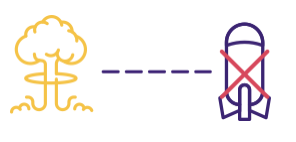
As a result, the US government has established a decentralized system that has many computers spread across the country. If an attack occurs, the defense system will continue to operate, ensuring that the two countries can destroy each other.

This is a dark history for the Internet. But this is also the origin of decentralized thinking.
Then, in 1990, Tim Berners-Lee created the Web (World Wide Web).
The Web is one of the earliest applications on the Internet. It enables people to browse content easily. However, it is a highly specialized tool primarily for researchers and students.
But that changed quickly.
1.1 Web 1.0
Five years later, new browsers like Mosaic and Microsoft Internet Explorer brought the Web to mainstream audiences.
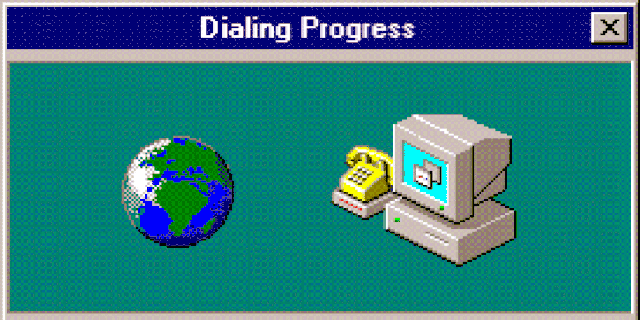
These are good times of the past. We surf the web. Web design is terrible. We have a dial-up connection. It took a long time to download a photo or a video. This is Web 1.0.
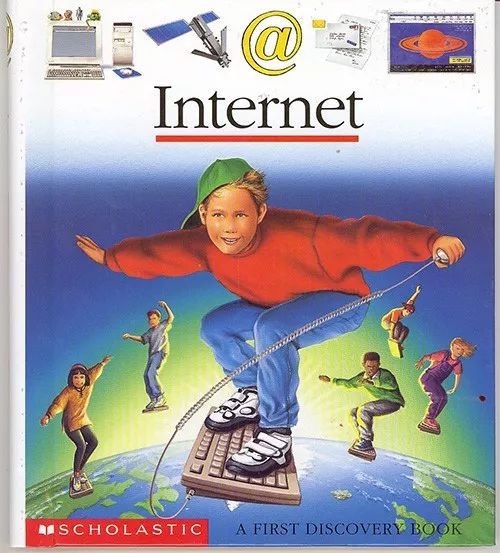
Web 1.0 is decentralized. It is driven by a normal computer. This is a computer photo of Tim Berners-Lee. It has a sticker on it that says Don't shut down. Because this computer powers the Internet.
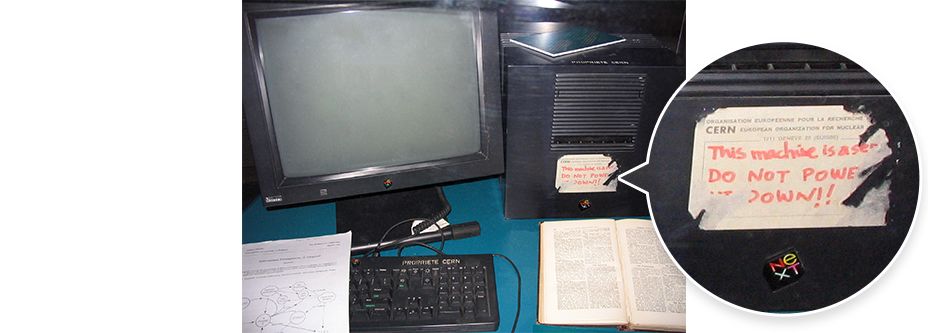
Web 1.0 is open source. This means that anyone can build freely on this basis. This makes it possible for new businesses like Google and Amazon to happen if the Web is private.
Finally, Web 1.0 is read-only . This means that for every thousand users browsing the Web, only a few have the technical skills to publish content.
1.2 Web 2.0
All this changed around 2005, with new sites such as YouTube, Facebook and Twitter bringing Web 2.0.
This is the first time that anyone can post content online, regardless of their technical level. Facebook, YouTube and Twitter are all easy ways for people to create their own web. They have led to the massive popularity of the Web today.
But at that time, people were already starting to see problems with these new sites. Although they make our online life more convenient, they slowly build walled gardens on the open web. We started to deviate from the original vision of the Web.

In addition, computers that previously powered the Web have gradually evolved into the large, centralized data centers needed to power these platforms.

The invention of the smartphone accelerated this phenomenon. Today we have incredible equipment that allows us to do a lot of things. Yes, they allow us to browse the web through apps like Safari, Firefox, and Chrome.

Unfortunately, these applications are drowned in many other closed, private, opaque applications.

1.3 What is Web 3.0?
First, understand the term Web 2.0 is a buzzword.
It was created by Tim O'Reilly, who saw the changes happen when he created the Web 2.0 Summit. This is a large conference that brings engineers and researchers together to discuss the future of the Web.
With the widespread spread of Web 2.0 ideas, an inevitable question arises: What will Web 3.0 look like?
People had a lot of conjectures at the time. People guess that Web 3.0 will be the web of artificial intelligence or the web of virtual reality. Although I think these are exciting technologies, I don't think they will redefine the Web.
Last year, there was a large conference called the Web 3.0 Summit.
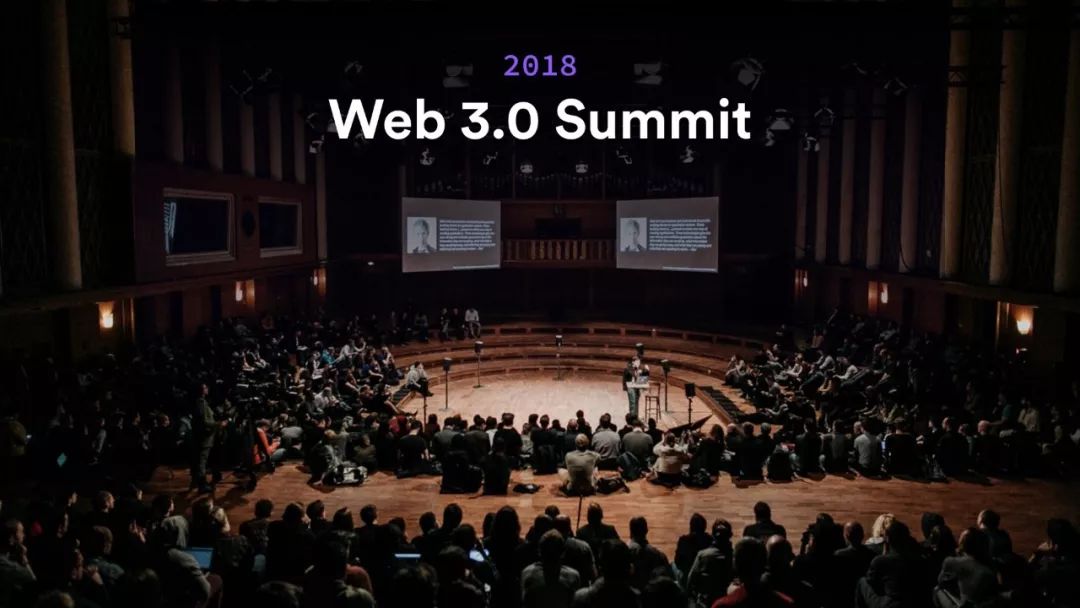
Just like the Web 2.0 Summit, this conference brought together a large number of engineers and researchers. The message from this is clear: Web 3.0 is about de-centralizing the Web again .
Why make the web decentralized?
Unfortunately, today's Web has crashed.

2 The web has crashed
Why is the web crashed? The reasons are as follows:
2.1 Advertising
As you know, today's Web is flooded with advertising.

Why are there so many ads? Back when the Web first appeared, it had no native way to deliver value. People are careful when using credit cards online. Therefore, the best way to make money online is to provide services for free and then make money through advertising.
This is where companies like AdWords and DoubleClick come in. By providing an online advertising platform, they can launch a business that provides content for free.
Over time, advertising became the web's default business model.
This led to today's Web, where everyone uses ad blockers, and the media uses ad blockers.

The media is losing revenue because online advertising is not as profitable as print advertising.
To compensate for this, the media rely on improper means such as click bait, fake news, and misinformation to make better use of people's attention. This is a vicious circle, mainly caused by the web's dependence on advertising.
2.2 data leakage

Back in 2017, The Economist announced that the data was new oil.
Today, people are racing to collect as much data as possible online. It started with the idea that user data leads to better advertising. Since then, the rise of artificial intelligence has only exacerbated this demand.
Unfortunately, this data is collected on these large central servers, which are favorite targets for hackers.

During the Equifax hack in 2018, 143 million people's information was stolen, including their social security numbers and driver's licenses. People have accused Equifax of saying their security is extremely poor.
But companies like Facebook and Google, which hired the world's best engineers, also suffered data breaches in the same year.
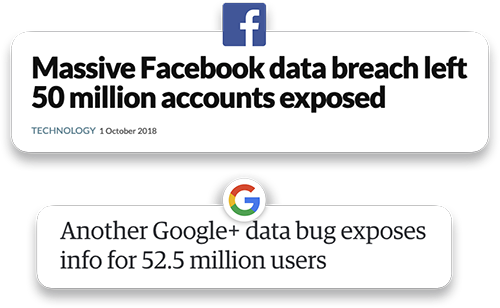
The lesson here is that no system is truly secure. Once you start storing data in a centralized server, there is an incentive for someone to steal the data. Every system can be cracked.
In 2017, 6.3 billion accounts were hacked. It's close to having an account for everyone on the planet. I can assure you that this number will rise in 2019.
2.3 Monitoring

Unfortunately, companies are not the only ones hoarding data. The government does the same. Thanks to Edward Snowden, we saw it all in 2014.
In addition to the United States, there are social credit reporting systems of governments in other countries that can use the collected citizen information to score citizens.
This is similar to the concept of a credit score, covering your entire civic life. If your score is too low, you may be barred from buying plane and train tickets, etc. This is a worrying direction.
2.4 Review
Next, review. With centralized servers, governments can easily block access to them.
For example, Turkey has been banned from accessing Wikipedia for almost two years. Because, as we know, Wikipedia is a threat to national security.
There are also firewalls, and countries such as Russia and India are building their own.
2.5 data loss
Two thousand years ago, the Alexandria Library was burned. The fire burned down thousands of precious documents in our history.
Everyone thinks this is a human tragedy. However, this kind of thing happens every day on the Web.

Everyone has had this experience. You try to visit a link and get a 404 error. The link was broken and the page was lost.
The average life of a website is about 100 days.
Every month, 2% of online links disappear forever .
These numbers are devastating when you think about how important today's Web is in terms of culture and information.
Non-profit organizations like the Internet Archive Foundation are trying to back up the entire Web, but given the speed of the Web's development and disappearance, this is an impossible task.
In short, the situation is bad.
The Web has many problems. What can we do for them?
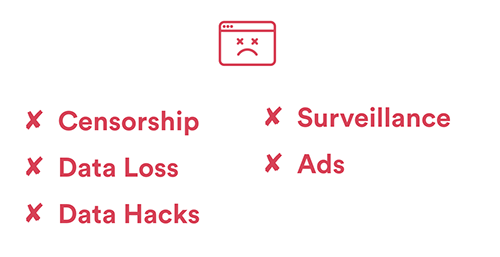
In preparation for this lecture, I read a book called Designing the Internet by David D. Clark, one of the founders of the Internet.
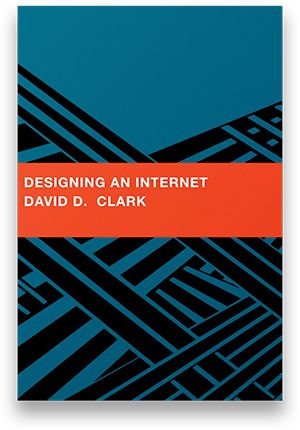
The title says it all: designing an internet .
After reading this book, I understand that the Web as we know it today is the only possible explanation for it. The Web consists of components, and these components are created by people like you and me.

Over the past 30 years, the development of these components has not solved the problems facing the Web today.
Web 3.0 is committed to updating these components to fix the issues I mentioned above.

3 Web 3
Web 3.0, referred to as Web 3, will bring three major changes:
- Currency will become an inherent feature of the Internet
- Decentralized applications (dapps) provide users with new features
- Users will have more control over their digital identity and data

As I mentioned earlier, advertising has become the default business model for the Web because the web has no trusted way to deliver value.
Thankfully, a recent invention solved this problem. I believe this invention will have a significant impact on our society in the coming decades.
This invention is Bitcoin.
Bitcoin revolution
In 2018, I gave a presentation on blockchain and Bitcoin. I don't think it matters whether Bitcoin will end up being a fleeting one. Because Bitcoin has a snowball effect. Bitcoin has completely changed our view of digital currencies.
Bitcoin brings two major innovations.
- It allows numbers to be scarce. For the first time in history, we can create objects that are both digital and unique.
- It allows you to spend online without any intermediary.
These two innovations will bring value to the Internet .
Internet of Value
To understand how valuable the Internet is, consider how Web 1 and Web 2 revolutionized the free flow of information.
Technology has changed every medium: newspapers, telephones, televisions, books, radio, photography, encyclopedias and more.

Information revolution
These are all part of our society, but have been completely changed by technology in the past 20 years.
Overnight, anyone can send messages anytime, anywhere, for free and instantly. This has completely changed our world.

Today, we seem to live in the future. We can talk to anyone, anytime, anywhere.
However, if you look closely, it is strange that it is not the technological revolution we have experienced. Instead, despite this huge technological revolution, the rest of our society has strangely remained the same.

Components of our society have hardly evolved in the last 50 years.
Many things that haven't changed are about value.
Just as Web 1 and Web 2 brought an explosion of free flow of information, Web 3 will also bring an explosion of free flow of value.
Just like information, in the coming decades, the transfer of value will be global, instant, free, and accessible to everyone.
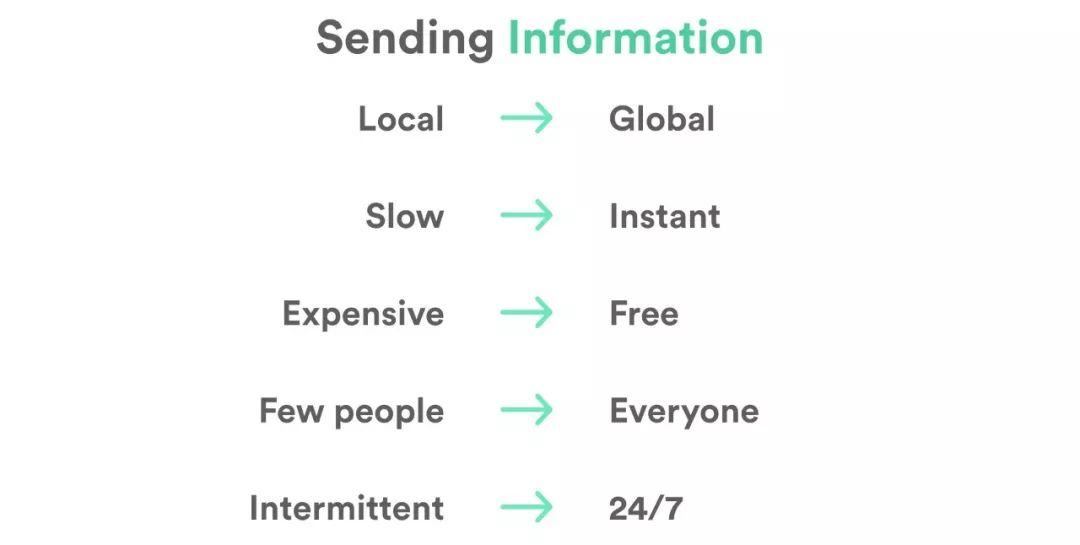
Although Bitcoin may upend cash or gold (depending on who you ask), the value revolution goes far beyond that.
Think about the scarcity of every component of society-stocks, bonds, identity, real estate, and so on. All of them can be converted via Web 3.
It's huge.

The idea behind decentralized applications (Dapps) is to take the innovations of Bitcoin-blockchain, cryptography, peer-to-peer networks, and consensus algorithms-and add them to web applications.
As I explained, Bitcoin allows you to trade without any intermediary. Why can't we build other applications with the same idea?
For example, when I use a chat application such as Messenger. Just like the previous example, if I want to chat with my friends like a child, I need to raise my hand to ask permission. In the end, companies like Facebook controlled my conversations with friends.
Isn't this strange? On the other hand, I can use a decentralized chat application like Orbit. This is a simple application that you can use right now. It enables you to chat with your friends without any intermediary.
So there is a crazy idea to put every application we use today on the web.
For example, Airbnb, Twitter, Facebook, and YouTube all have decentralized versions without central authority or authority.
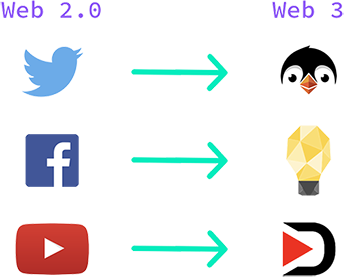
From top to bottom: PeepEth, Minds and DTube
There are many decentralized applications today:
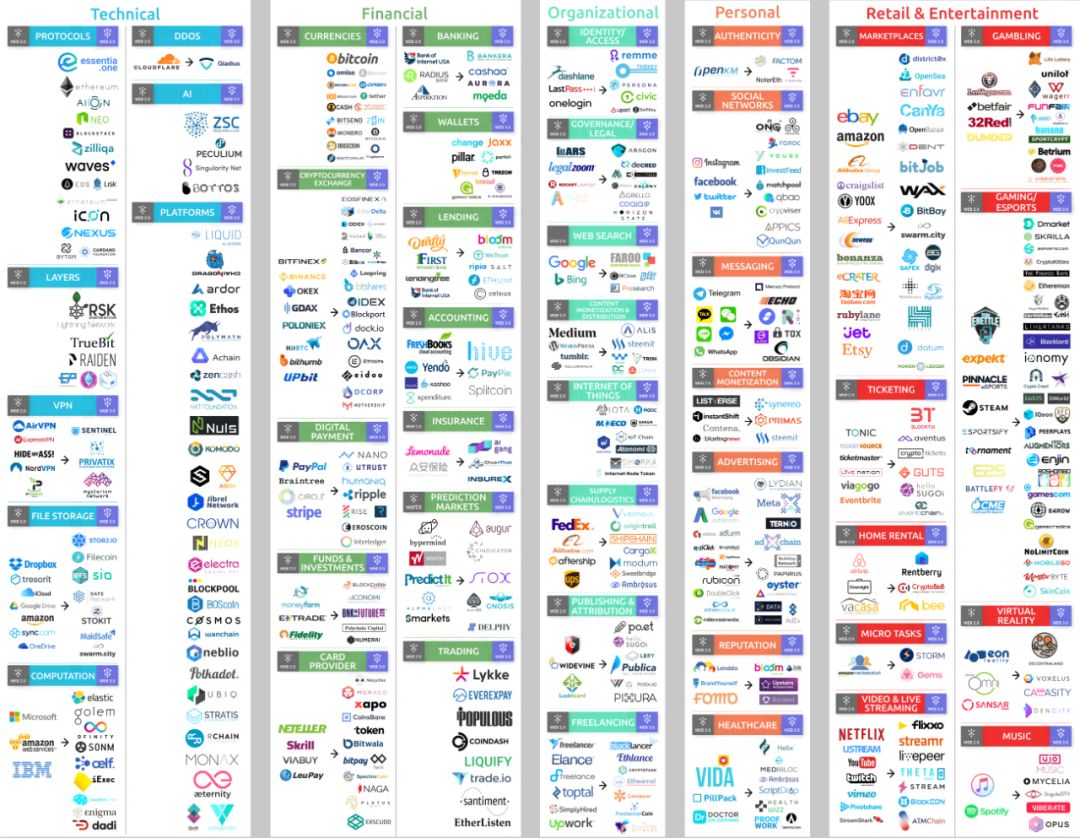
It's a sport. In all areas-whether it is currency, banking, payments, advertising, supply chain-people are building decentralized versions of the applications we use today.
How do we build decentralized applications?
As I mentioned earlier, this is about changes to the web infrastructure itself.
The web infrastructure will have its own native payment layer containing projects like Bitcoin (of course, Bitcoin is not the only project, and there are many other competing cryptocurrencies).
Then there are virtual machines like ethereum. These platforms will run code that supports decentralized applications.
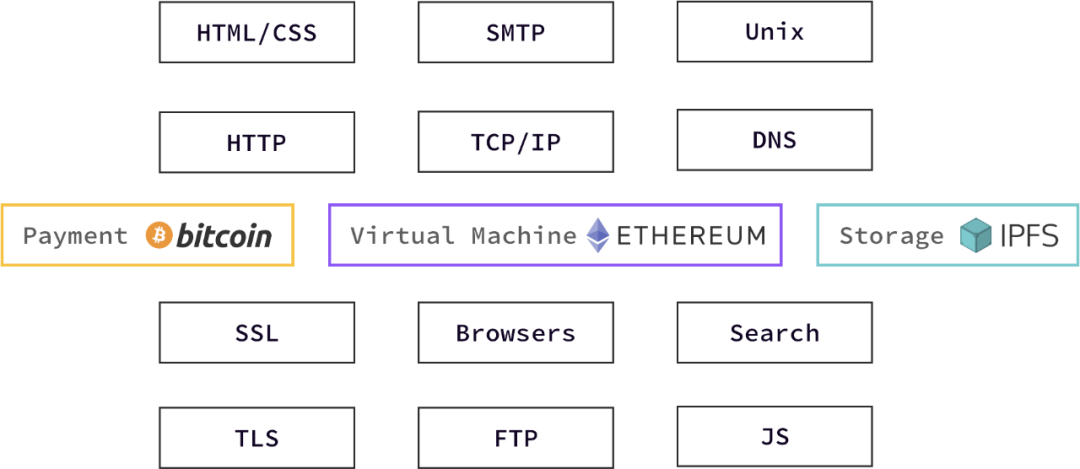
On this basis, we can also add a decentralized storage layer. This will store the source files required by the application, such as images, videos, text, and so on. In this regard, the IPFS project is worth mentioning.
IPFS
IPFS (Interstellar File System) is a project jointly developed by Protocol Labs and Juan Benet. Its goal is to become an alternative protocol to HTTP.

Broadly speaking, IPFS allows you to create a local web. What does it mean?
Today, if I want to download an image, I will most likely download it from the cloud.
IPFS leverages the network capabilities of these devices, such as Wi-Fi, to create interconnected networks. With IPFS, I can still download the file from the cloud, but once I have it, anyone can get the file from my device.
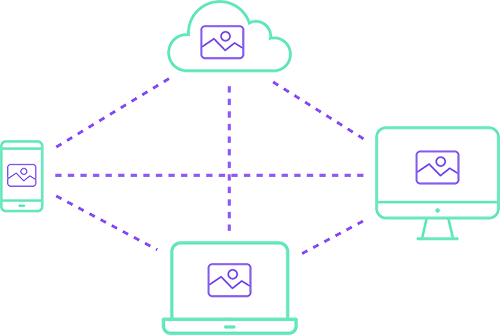
This brings many benefits.
1. Anti-censorship. I mentioned earlier that Turkey has blocked Wikipedia for almost two years. Hackers have created a decentralized version of Turkish Wikipedia that runs on an IPFS network that Turkey cannot block. This is an innovation designed to address the review issues I mentioned earlier.

2. More durable. I did a lot of preparation for this speech. I keep these links in my bookmarks. I can assure you that if I try to return to these links in a few years, some of them will be lost.

With IPFS, however, I can decide to save these pages to my device and anyone can access them from my computer. Even if YouTube or the media disappears, as long as there is one device in the world with the file, it will still be accessible.
In addition, IPFS has a built-in version history.
This is similar to features like Time Machine on Mac. This is a popular feature of many software today. It allows you to browse files from previous versions. This is built directly into IPFS.
This is also a project designed to address data loss.


So far, the government has managed our identity by issuing passports and driver's licenses.

Strangely enough, in recent years, private companies have also become identity management companies. Today, we have been receiving various forms online asking us for various personal information.
For small companies, identity is difficult to manage. Therefore, recently, large technology companies like Facebook and Google have facilitated various operations by becoming identity administrators on the Web.

Again, isn't this a bit weird, private, profit-seeking companies now control our identity?
This is a problem our friend Tim Berners-Lee has been trying to solve for a long time. He wrote many lectures on the subject.
Last year, he announced a new project designed to change that. This project is called Solid, which means Social Linked Data.
Here is a quick introduction to how Solid works.
The idea for Solid is that users store their personal information in personal online data storage units, pods, rather than providing it to private companies. Users can store their names, addresses, phone numbers, and more. In other words, any information related to your online identity.
Pods are encrypted and can be hosted anywhere users need them: on their devices, servers, and possibly even on the blockchain.

Its vision is to be able to connect to a web application via such a button. However, since we still control our data, we can precisely control which application can access which information.
To understand what I mean, consider how you currently manage the notification list on your phone. You have this application list and you can choose the type of notifications that each application can send. Imagine having the same control, but who accesses the information instead of the notification.
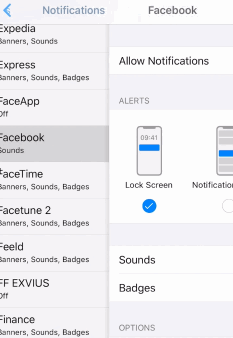
Solid is a recent project. It's still under construction, but you can try it here.
Honestly, it's not very good now and it's not easy to use. However, there are many other projects in the field of cryptography, such as uPort and Blockstack, whose goals are to solve the same problem in slightly different ways.

Some projects focused on decentralized identity
Despite many projects, the core idea remains the same: people are responsible for their own data. This brings many benefits.
No more forms
The first is no more tables. I don't think anyone likes filling out forms. This is repetitive and frustrating. The idea of decentralized identity is that you fill in your information only once and all services are connected from there.
Unidirectional data flow
Credit cards are a completely obsolete payment technology. When you use a credit card, you give the merchant your card number, expiration date, and security code. In other words, you give them the password for the money.
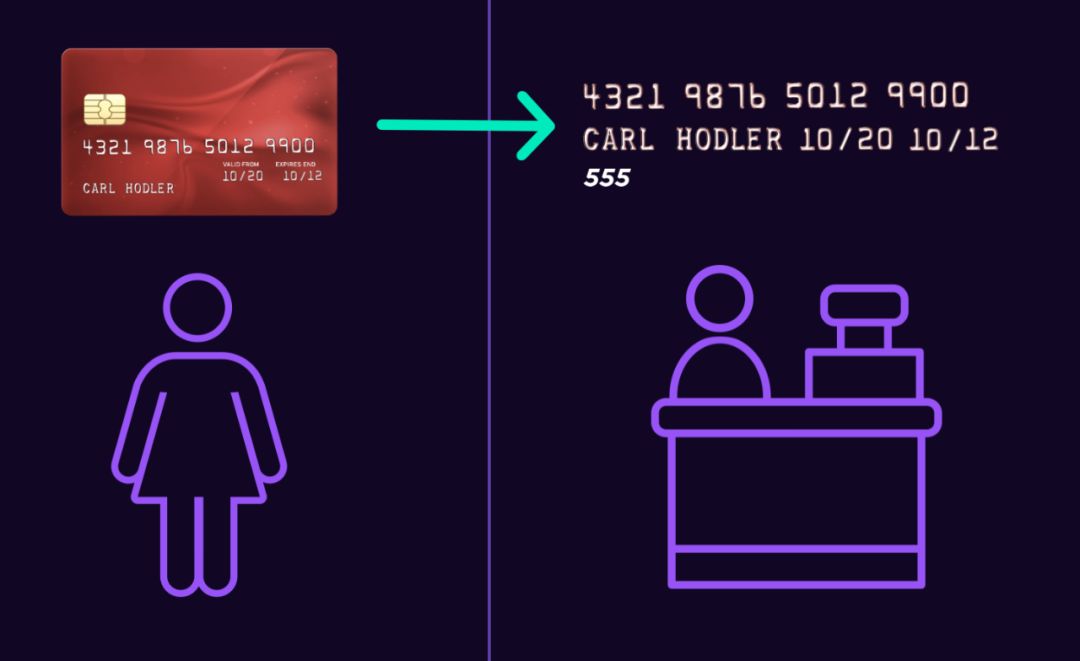
With this information, merchants can charge you without your consent. That's why credit card scams are so many.
On the other hand, when you send a bitcoin, instead of giving your password, you sign the transaction encrypted. The signature is unique and valid only for that transaction. Therefore, without your consent, the merchant cannot charge you again.
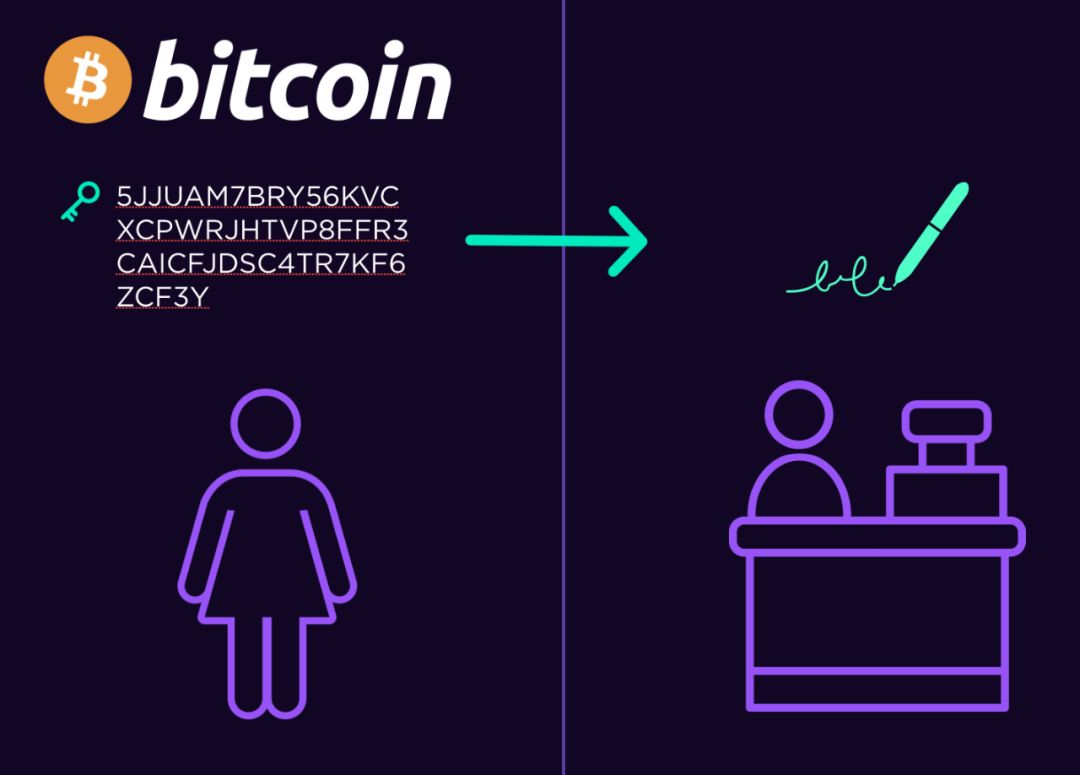
If you think about it, we have the same problem in identity.
When I give my social security number to a website, I give my identity password. They will keep it on an insecure server, and after a while, it will be stolen by hackers.

Why can't we use passwords here? Instead of leaking my password to my identity, I can also sign a transaction with the password to prove that I am the person I want to prove. Well, no one can steal my identity.
This is the foundation of a more secure, decentralized identity.
3. Safer
Decentralization is more secure.
As I mentioned earlier, no system is truly secure. There will always be data breaches and hacking. We cannot guarantee that no one can enter your pod. But since this data is not stored on a central server, we will not see hackers hacking the server and stealing 150 million social security numbers. To steal 150 million decentralized identities, someone has to hack 150 million pods, which is almost impossible.
These innovations should help solve problems such as data hacking and monitoring.

Make developer's life easier
I have shown how Web 3 will bring new local web layers to payment, storage and identity. These innovations should also make developing web applications easier.
Consider an application like Uber. To build such an application, you need to assemble many components, such as payment, storage, and identity management systems.

Then another company like Lyft launched a similar application. They need to rebuild these components. A lot of work is repeated.
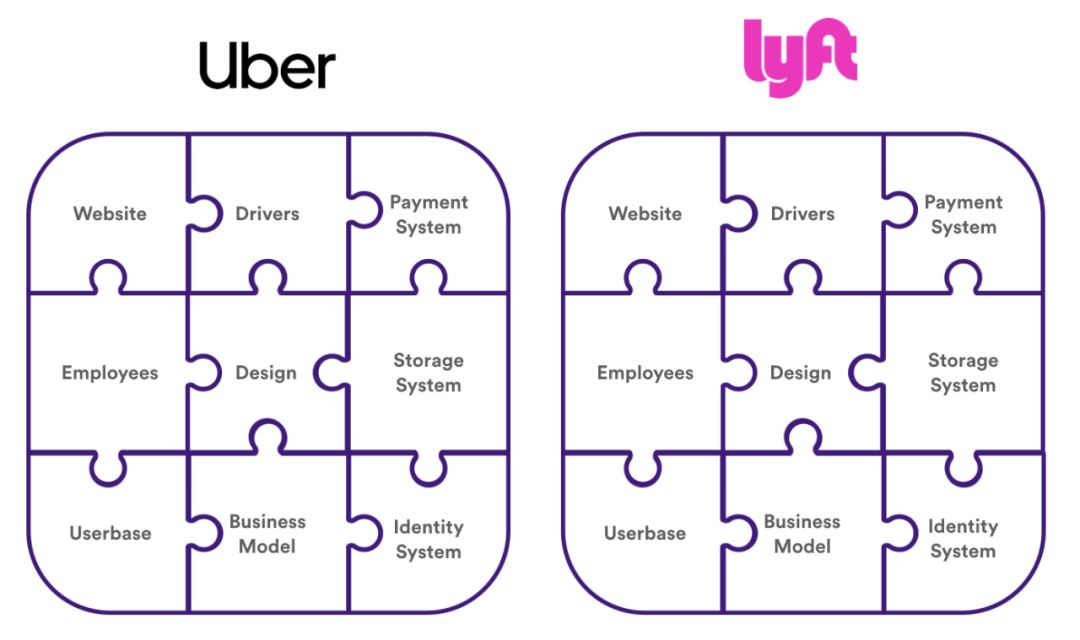
The idea of Web 3 is to take these components out, disperse them, and then return them to the user. The user wins, and the developer wins, because each component only needs to be built once.

It doesn't matter if Uber and Lyft don't want to use these decentralized components, because the decentralized versions of Uber and Lyft use them.
This innovative infrastructure should help prevent monopolies, as it makes it easier for developers to build web applications.
What does Web 3 look like?
All of this is interesting, but you might ask yourself: how exactly do we browse the Web 3? There are many ways:
- Add extensions to the browser, such as @metamask.
- New browser, like Brave.
- Portals like MyEtherWallet.
- Mobile applications such as Coinbase wallets.
MetaMask
Let's talk about MetaMask. I believe this is by far one of the most elegant solutions for browsing Web 3.
It is a browser extension that you can add to your browser, such as Chrome or Firefox. After adding, you will see this small icon in the upper right corner.

Then you can connect to your wallet and let your browser have new features to interact with the blockchain (such as ethereum). This enables you to use Web 3 applications, such as Robert Leshner's composite finance or Cryptokitties' crypto cat.
Brave
Brave is a new project for BrendanEich, who is a very important person who helped create Mozilla, Firefox and JavaScript.
His new project is a browser called Brave that blocks ads and followers by default. This makes it the fastest browser on the market. It's four times faster than Chrome.
Brave has been developed to use a cryptocurrency called Basic Attention Token. For example, when I use Brave to watch YouTube, I can click on the BAT icon to access the wallet.
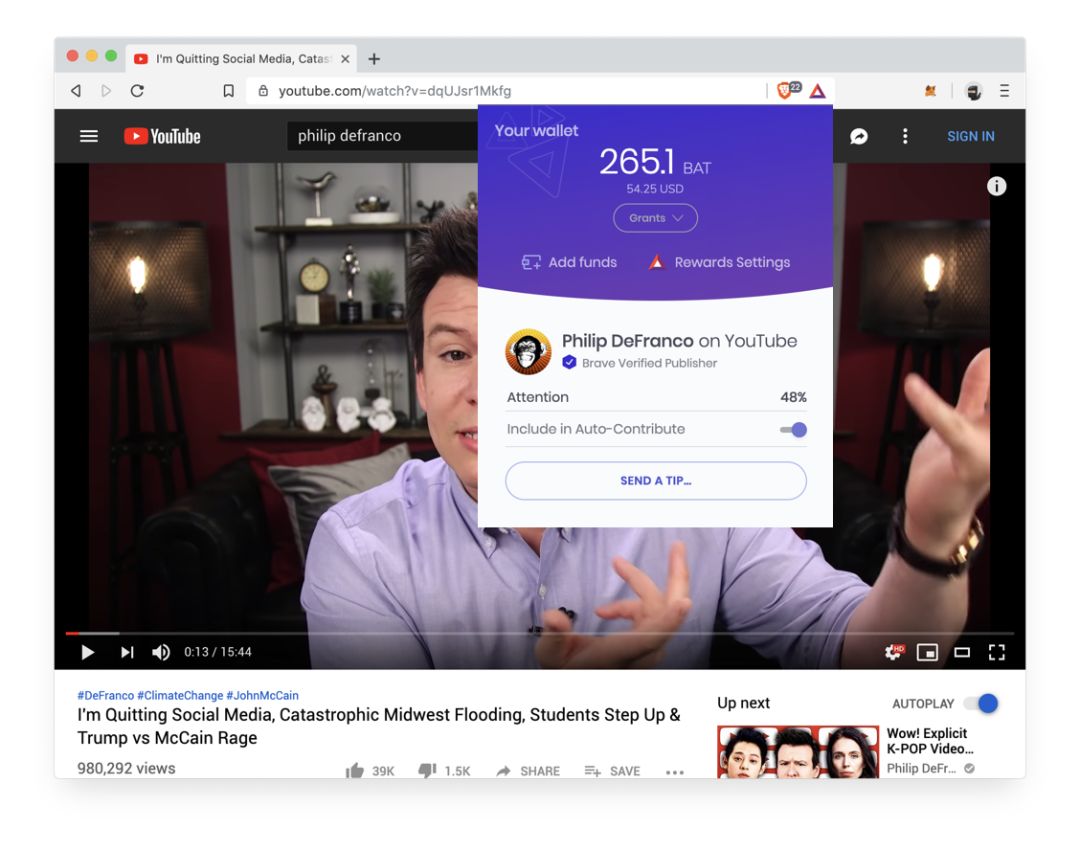
With this, I can tip any content creator online directly through their website.
There is also an automatic payment feature that leaves a certain amount of money each month. Once this is done, I can browse the web and Brave will automatically allocate the money to the different pages I visit.
Brave is currently available on desktops, tablets and phones, as well as Android and IOS. It has 5.5 million active users per month. This is a great entry into the cryptocurrency world.
Ultimately, Brave's goal is to revolutionize the advertising industry by building a decentralized advertising market, using blockchain and cryptography.
Such projects should allow us to reduce our reliance on web advertising and allow us to pay directly through the browser.

4 Summary
In this article, we saw how the Web has evolved over the past 30 years.
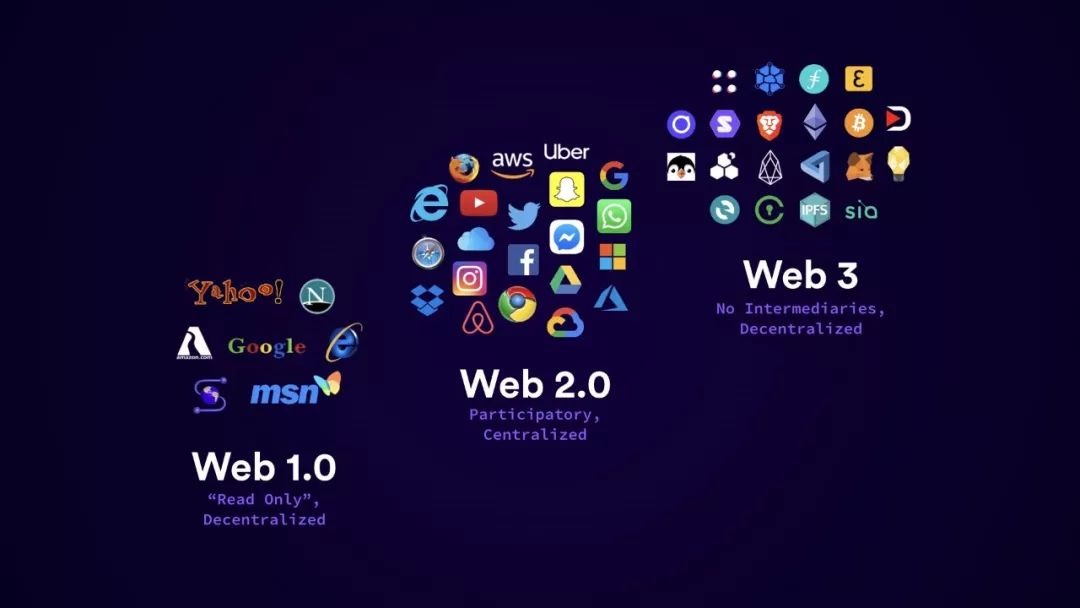
The evolution of the web
We learned about Web 1.0, which is read-only and decentralized. Then, big tech companies emerged. They make the Web easier to use, but they also make the Web more centralized. This is Web 2.0. Web 3 will now allow us to interact with each other without any intermediary. It will re-decentralize the Web.
Because most of the change will happen at the infrastructure level, it will be a slow, almost invisible transition for most people. Maybe they need to learn how to use a wallet or learn how to interact with the blockchain. Maybe they need to use a different browser. But overall, for Web users, the situation will remain essentially the same.
5 Pendulum of history
If you think about it, human history has been swinging between centralization and decentralization.
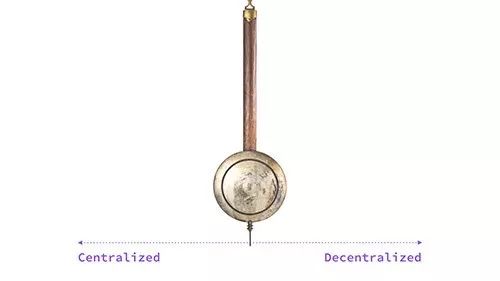
For example, in the cave era, everyone had to rely on himself. This is survival of the fittest.
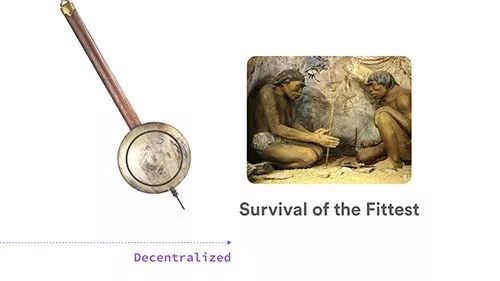
Eventually, people realized they were stronger and more efficient together. So we slowly started to gather in the form of tribes, and gradually developed into cities and countries. This peaked in the monarchy, where a few kings ruled everyone, leading to a terrible abuse of power.
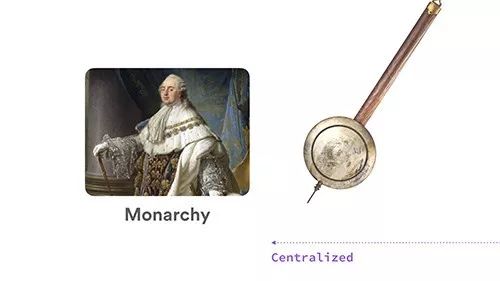
People are fed up. They rebelled and beheaded the king's head, leading to another form of decentralized anarchy.
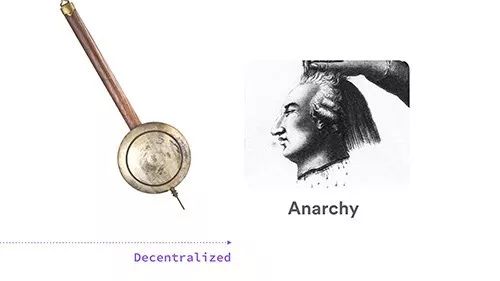
After centuries of iterating between the two extremes, we have come up with a balanced system: democracy. It has both a centralized component like the president and a decentralized component like every referendum.

If you think about it, you will find that this is the same as technology. We started with these huge, centralized mainframes, which initially occupied the entire floor.

After seeing the weakness of such a system, we created a decentralized system: Web 1.0. It's fine, but hard to use.
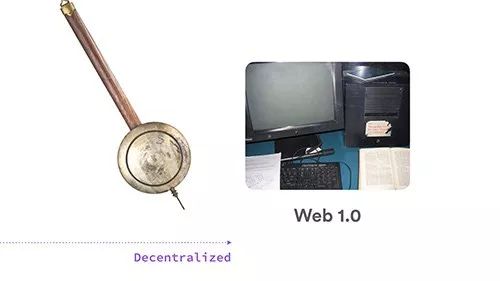
Then, big companies like Google, Facebook, and Twitter joined in to make the Internet more accessible. This is Web 2.0.
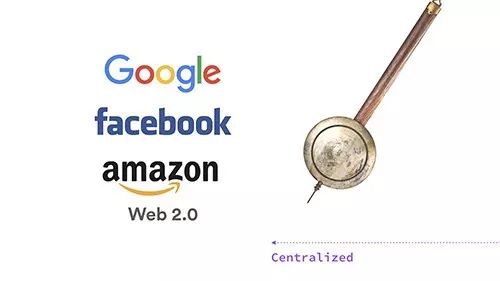
To be clear, I don't think these companies are bad. Instead, they have made incredible contributions to the Web and our lives. I believe their existence is a net benefit to humanity.
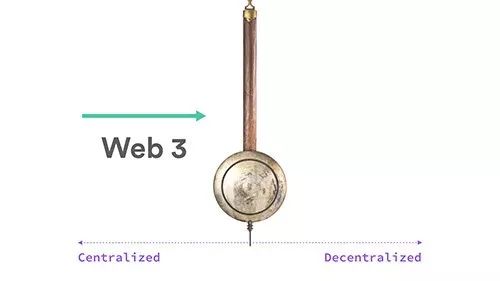
Web 3 is not meant to replace them. It just pushes the Internet back to a more balanced and democratic Web.
6 Internet of Things
This will be very important, such as where we are going, everything in our home will eventually be connected to the internet.
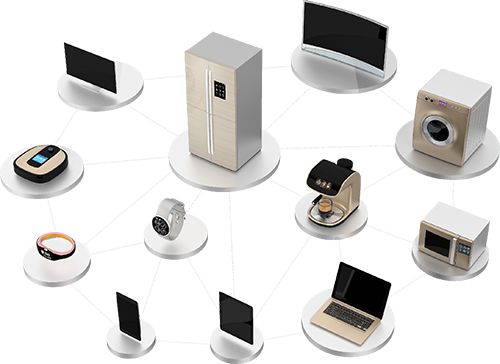
Such as the Nest thermostat. This device collects your sensitive data, such as in which room you spend most of your time.
In 2014, Google acquired Nest. This has caused many people to worry about whether Google will use this data.
Therefore, Fader, then Nest CEO, assured people that the privacy policy would remain unchanged. I believe Sandal is sincere and kind.
The question is, why should I rely on his promise to protect myself from the thermostat? Before using Nest, I didn't have to worry about the thermostat sending my private data to the Internet.
We should not rely on the promises of Google, Facebook, or Mark Zuckerberg to protect us from our devices. That's the whole point of Web 3.
Web 2.0 relies on promises such as "do no evil", while Web 3 is about changing the infrastructure itself to build a web that people and big companies "cannot do evil".

Author:
Tony Aubé is a Google product designer and he is interested in the intersection between new technology and design.
Juan recommended
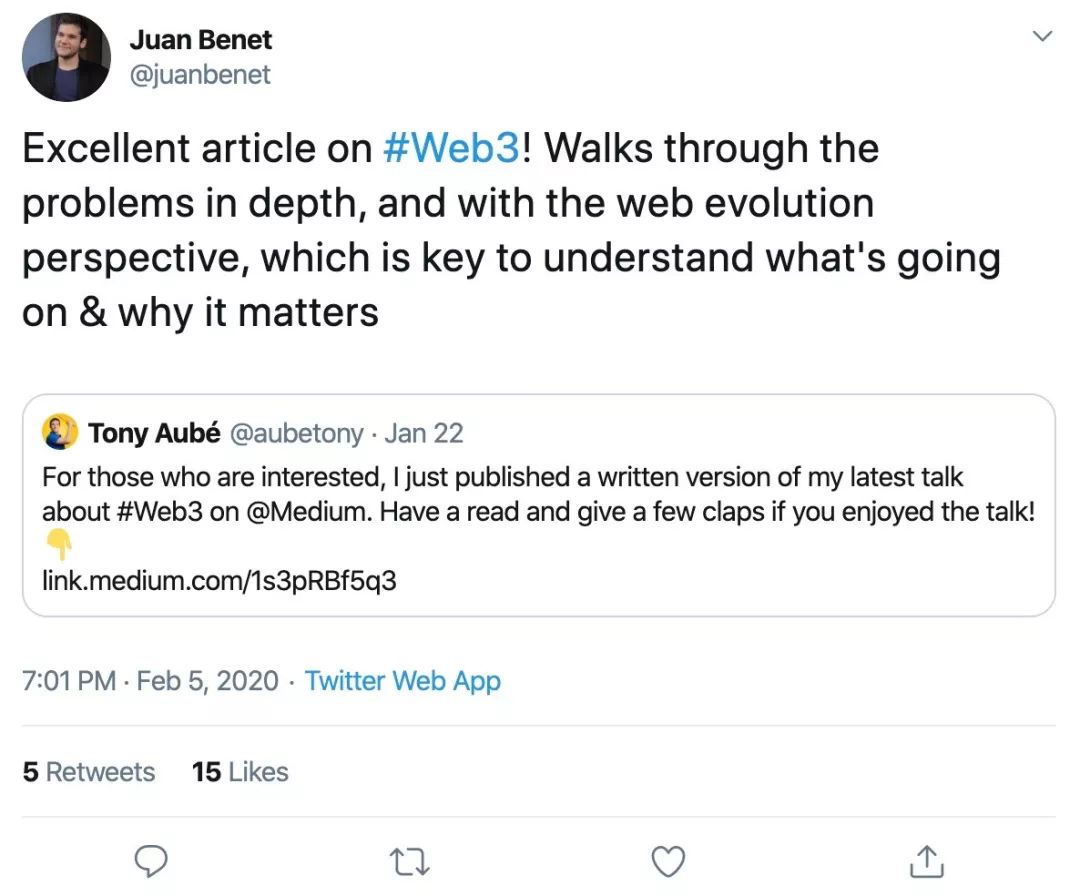
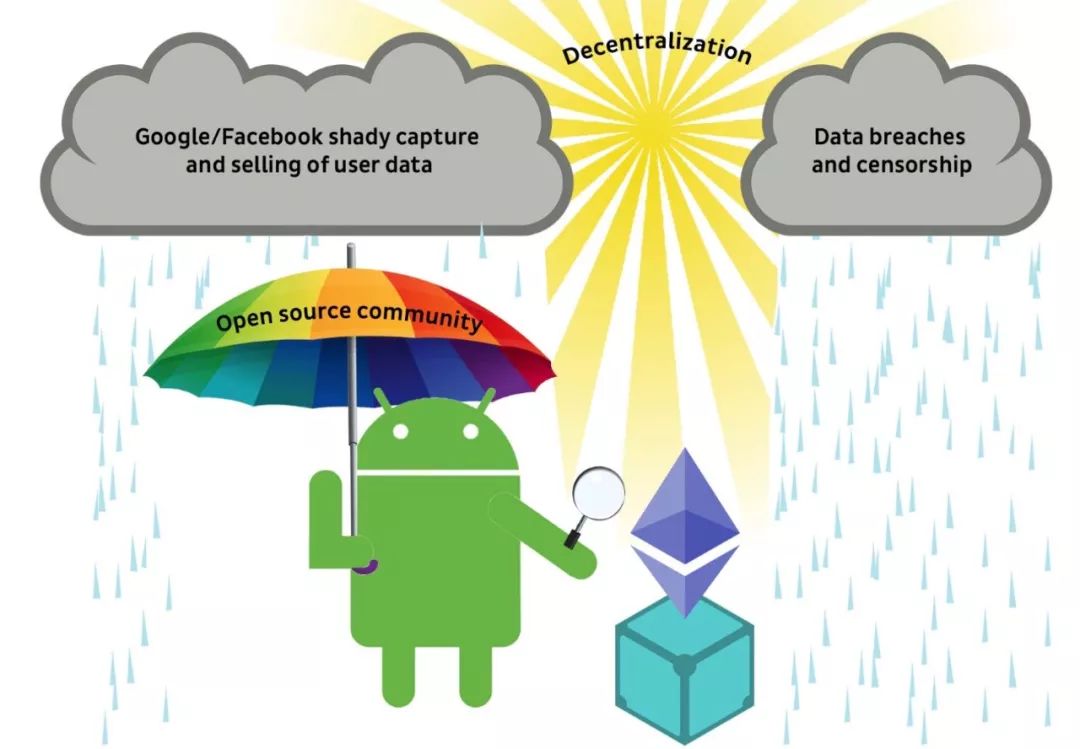
We will continue to update Blocking; if you have any questions or suggestions, please contact us!
Was this article helpful?
93 out of 132 found this helpful
Related articles
- Technical Primer | Anatomy of Network Components in Libra
- The "savior" of small payments? Visa crypto head envisions Bitcoin's smallest unit, Satoshis, as the Internet micropayment standard
- Debate: Will halving Bitcoin lead to higher transaction fees?
- Russian central bank completes blockchain platform pilot project for digital rights issuance and transfer
- What is Lightning Loan? How to use it to arbitrage $ 360,000 in 13 seconds?
- Taking history as a mirror, the altcoin season is coming again?
- FCoin nearly 13,000 BTC can not be paid, some people report it, some people save themselves






